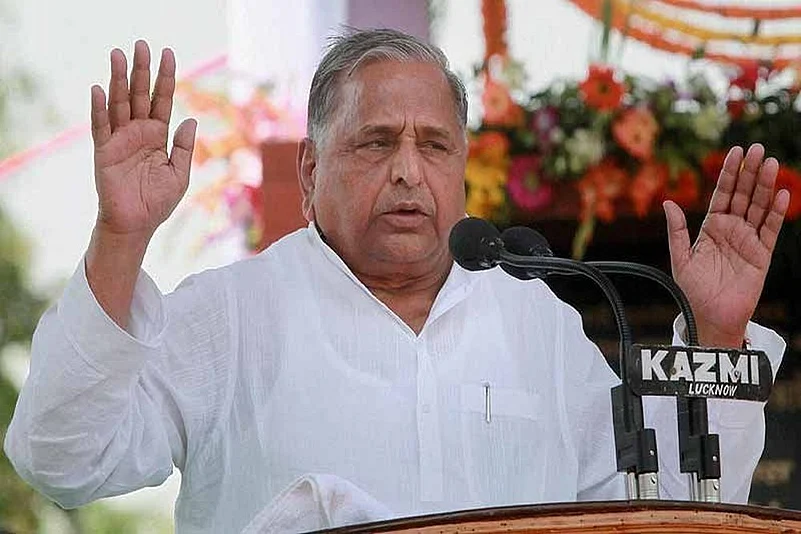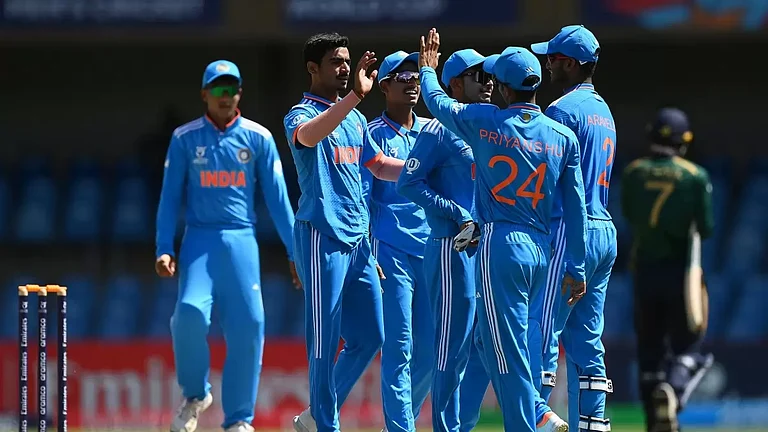If one needs to learn how to survive the mud waters of Indian politics, one needs to look at Mulayam Singh Yadav.
As 82-year-old Mulayam who breathed his last today at the Medanta Hospital, Gurugram, it's right time to revisit the colourful life of the socialist leader who transcended his regionality to become one of the most crucial factors of Indian politics.
Mulayam's early life: From a wrestler to a politician
Mulayam was born on November 22, 1939 in Saifai village of Etawa district in present-day Uttar Pradesh in a poor family.
Mulayam’s parents Murti Devi and Sughar Singh Yadav were peasants from a humble background. In his early life, he was ambitious to become a wrestler.
Observed first by the then MLA of Jaswantnagar Nathu Singh for his skills, Mulayam was picked to be his protégé. He also started his career as an MLA of Sanyukta Socialist Party from Jaswantnagar only in 1967. However, it is said that Mulayam has not forgotten his wrestling skills and it is evident in his capacity to navigate through Akhilesh-Shivpal strife for which the party otherwise would have paid a huge price.
Known for his ‘charka dao’ —a step in the ring where one lifts the opponent off his feet, spins him around and throws him back on the ground— Mulayam has never missed the chance to use it on his opponents.
Mulayam's educational qualification: A small step at a time
Mulayam pursued his BA, BT, and MA degrees from different colleges, namely KK College, Etawah, AK College, Shikohabad, and BR College, Agra University.
Mulayam’s knowledge of political science perhaps helped him to pass through different difficult terrains.
Mulayam's political career: Climbing the ladder of caste
A person of his time, Mulayam Singh Yadav was attracted by the ideology of Ram Manohar Lohia, who became the face of the downtrodden in 1970s.
During Emergency, Mulayam served jail for 19 months. In 1977, when the Janta Dal came to power as the first non-Congress Government, Mulayam was appointed as a minister of state.
The appointment was a critical moment of Mulayam’s life that changed his later political life. As a state minister, he reserved the seats for scheduled castes in cooperative institutions. This made him a messiah of the backward caste communities and he took no time to use it to fulfil his political aspirations.
The socialist ideology and appeal among the downtrodden made Mulayam the first choice for the Chief Minister of Uttar Pradesh in 1989 when Janta Dal came to power in UP with support of Congress. To save his secular credentials, he ordered police firing on kar sevaks in 1990 — just two years before the demolition of Babri Masjid in Ayodhya.
However, with the emergence of saffron wave across North India, Mulayam could not hold his position. In 1991, when Congress withdrew its support, he lost his seat to Bharatiya Janata Party (BJP).
Mulayam’s efforts to hold onto his Muslim-Yadav voters, an equation that Lalu Prasad Yadav was also implementing in Bihar politics, made him launch Samajwadi Party (SP) in 1992. His popularity could be gauged by the fact that he became the chief minister again within a year with his newly-launched party and support of another newbie Bahujan Samajwadi Party (BSP) in 1993.
However, as the caste equation every time does not work in your favour, Mulayam lost his seat to Mayawati in 1995.
In 1996, nevertheless, Mulayam was about to get the biggest break of his political career. When Union Front came to power and was contemplating forming the government, Mulayam’s name was floating in the political corridors of Delhi after the name of Jyoti Basu. It was Lalu’s opposition that could not let him become the Prime Minister of India.
Consequently, in Dev Gowda government, Mulayam was given the valued consolation price of Minister of Defence. He continued to hold the ministry until the government was toppled, to be succeeded by the first National Democratic Alliance (NDA) government.
Mayawati’s assertive Dalit politics and targeting of Mulayam for his party leaders’ alleged role in crime and corruptions made his political prospects decline. However, in 2012, when the SP came to power again, Mulayam made his son Akhilesh Yadav as the Chief Minister of Uttar Pradesh. Since then, Mulayam has been working from behind the veil.
Political controversies: From hidden hobnobbing with RSS to assertive misogyny?
Known for his steadfast position against the Rashtriya Swayamsevak Sangh (RSS) since the 1990s when Mulayam ordered the firing on kar sevaks, Mulayam has always kept safe distance from far-right groups. However, in 2021, a photo of RSS chief Mohan Bhagwat and SP founder Mulayam Singh Yadav sitting together in a programme called by the then Vice President Venkaiah Naidu took Twitter by storm.
People indulged in a range of speculations and no one ranging from the Congress to the BJP left the chance to throw their hat into the rings of mudslinging. While Congress took a jibe saying ‘S’ of Samajwadi party stands for Sanghbaad, the BJP said “the photograph says it all”.
In the closing session of parliament before 2019 general elections, Mulayam said he wanted Prime Minister Narendra Modi to become the Prime Minister again. The statement also brought severe criticism and it was placed in contrast to Mulayam’s secular credentials among Muslims. Notably, the BJP earlier used to term Mulayam as ‘Mullah Mulayam’ for his close bonhomie with the Muslims of the state.
If his hidden relations with RSS was a matter of concern for the progressives, Mulayam’s misogyny made him the poster boy of political patriarchy. Back in 2014, while opposing the capital punishment for rape, Mulayam said, “First girls develop friendship with boys. They, when differences occur, level rape charges. Boys commit mistakes. Will they be hanged for mistakes?”
The ‘mistakes’ was a reference to rape.
Using the patriarchal obscene slogan of ‘boys will be boys’ in 2010, Mulayam during the debates on Women Reservation Bill said that if women would be elected in much numbers, there would be catcalling instead of passing the bills.
Mulayam’s misogyny crossed all the mark when he said in reference to the rural women’s presence in the Loksabha: “Only girls and women from affluent class can go forward...remember this… you [rural women] will not get a chance...Our rural women did not have that much attraction.”
The final pin on the coffin was Mulayam’s comment in 2015 where he said that rape is not possible by four men.
“One commits rape and then four more are named. Kabhi aisa ho sakta hai kya? Aisa practical hi nahin hai. (Can such a thing happen? It is impractical),” said Mulayam at the time, the then-chief of the then-ruling SP.
While all of these incidents make SP founder Mulayam Singh Yadav a colourful character, his consistency in the political field makes everybody numb. When he found that caste was the major equation to climb up the political stairs in post-Mandal era, he used it in the best possible way. Judging the water recently when he understood that Modi-baiting is not going to work, he showed his faith in Narendra Modi.
Mulayam Singh Yadav’s emergence is a compilation of Indian politics — wherever power goes, you follow!



























